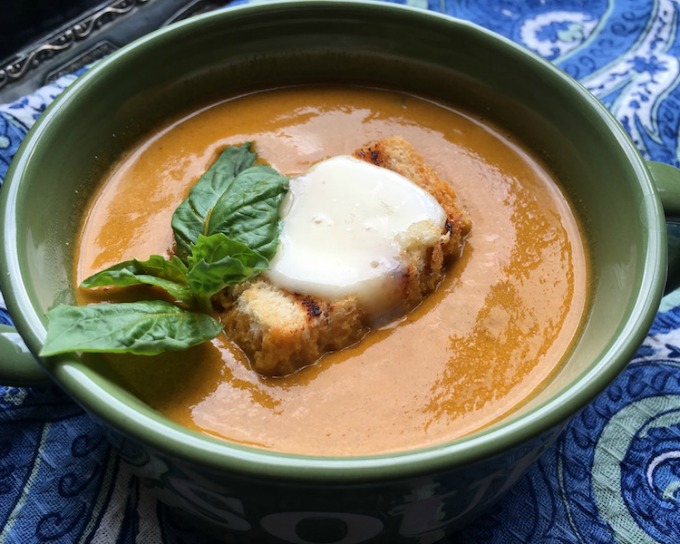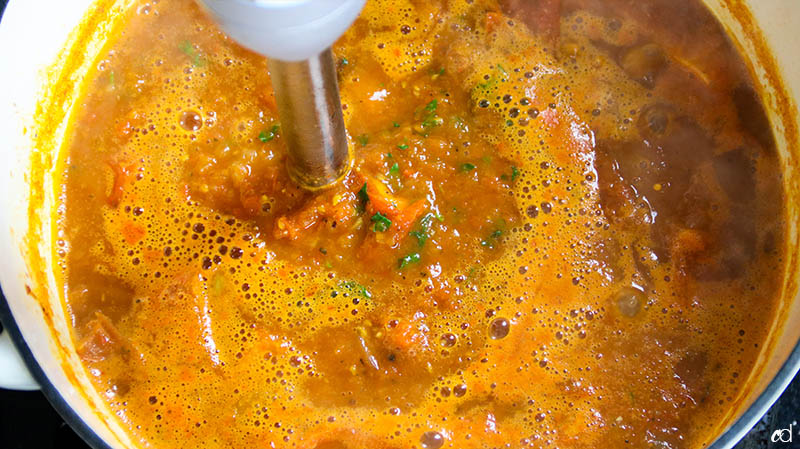Roasted tomato soup has long been a staple in kitchens across the United States, offering a warm, comforting taste that pairs perfectly with crusty bread or a classic grilled cheese sandwich. Whether you're looking to make the most of end-of-season tomatoes or simply craving a hearty bowl of soup, this recipe is a must-try. With its rich, caramelized flavor and simple ingredients, it’s easy to see why roasted tomato soup remains a favorite among home cooks and food enthusiasts alike.
The Magic of Roasting Tomatoes

The key to creating an exceptional roasted tomato soup lies in the roasting process. By roasting fresh, ripe tomatoes, you bring out their natural sweetness and deepen their flavor, resulting in a soup that's far more complex than what you'd find in a store-bought version. This technique not only enhances the taste but also gives the soup a velvety texture that's hard to replicate with canned tomatoes alone.
When selecting your tomatoes, opt for varieties like cherry, grape, Roma, or cluster tomatoes, as they tend to roast well and develop a concentrated flavor. These smaller tomatoes are ideal because they don't release too much water during roasting, ensuring a richer, more flavorful base. If you’re making the soup in the winter, small cherry or grape tomatoes will be your best bet, as they still offer a good balance of sweetness and acidity.
Essential Ingredients and Tips
To create the perfect roasted tomato soup, you'll need a few key ingredients:
- Ripe tomatoes: Choose the freshest, most flavorful ones available.
- Onion and garlic: These add depth and savory notes to the soup.
- Olive oil: Helps the vegetables roast evenly and adds a subtle richness.
- Salt and pepper: Essential for seasoning and balancing flavors.
- Vegetable or chicken broth: Provides the liquid base for the soup.
- Herbs: Fresh basil, dried oregano, and smoked paprika enhance the overall flavor profile.
- Optional additions: Heavy cream, cheese, or a splash of wine can elevate the soup further.
One important tip is to leave the garlic cloves whole and unpeeled during roasting. They’ll become sweet and tender, and you can easily squeeze them out of their skins once the soup is ready. Additionally, if you prefer a smoother consistency, consider using a high-speed blender instead of an immersion blender for a silkier texture.
Variations and Customizations

While the classic roasted tomato soup is already delicious, there are plenty of ways to customize it to suit your taste. Here are a few popular variations:
- Add cream: Stir in a splash of heavy cream or a dairy-free alternative like coconut milk for a richer, creamier texture.
- Include bacon: Crispy bacon bits or some leftover bacon grease can add a smoky, savory twist.
- Add beans or potato: For a thicker, heartier soup, try adding white beans or sautéing a small Russet potato with the vegetables.
- Use pesto: Instead of fresh basil, drizzle a swirl of basil pesto into each bowl for a bold, herbal finish.
- Sweeten it up: If your tomatoes are particularly acidic, a bit of sugar can help balance the flavors.
These variations allow you to tailor the soup to your preferences, whether you're looking for a lighter version or something more indulgent.
Pairing Suggestions

Roasted tomato soup is incredibly versatile and pairs well with a variety of sides. Some popular combinations include:
- Grilled cheese sandwiches: A timeless pairing that brings together the creamy soup and crispy bread.
- Garlic bread or focaccia: Perfect for dipping into the soup.
- Mozzarella and tomato panini: Adds a refreshing crunch and extra tomato flavor.
- Caesar or arugula salad: Offers a light, crisp contrast to the rich soup.
- Stuffed baked potatoes: A hearty side that complements the soup beautifully.
- Crackers or cheese toasts: Quick and satisfying options for a casual meal.
For a summer twist, you can even serve the soup chilled as a gazpacho-style dish, blending in some ice cubes for a refreshing treat.
Storage and Reheating
If you have leftovers, roasted tomato soup can be stored in an airtight container in the refrigerator for up to four days. For longer storage, freeze the soup in labeled containers for up to three months. When reheating, you can use a stovetop or microwave, adding a bit of broth or cream if the soup becomes too thick. Remember to taste and reseason after reheating, as flavors may mellow slightly over time.
Final Thoughts
Roasted tomato soup is more than just a comfort food—it's a celebration of seasonal ingredients and simple, elegant cooking. Whether you're making it for a cozy dinner at home or serving it at a gathering, this recipe is sure to impress. With its deep, smoky flavor and versatility, it's no wonder this soup continues to be a favorite among Americans. So grab your favorite tomatoes, preheat the oven, and get ready to savor a bowl of homemade goodness that's both comforting and unforgettable.